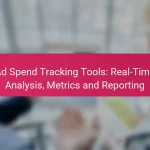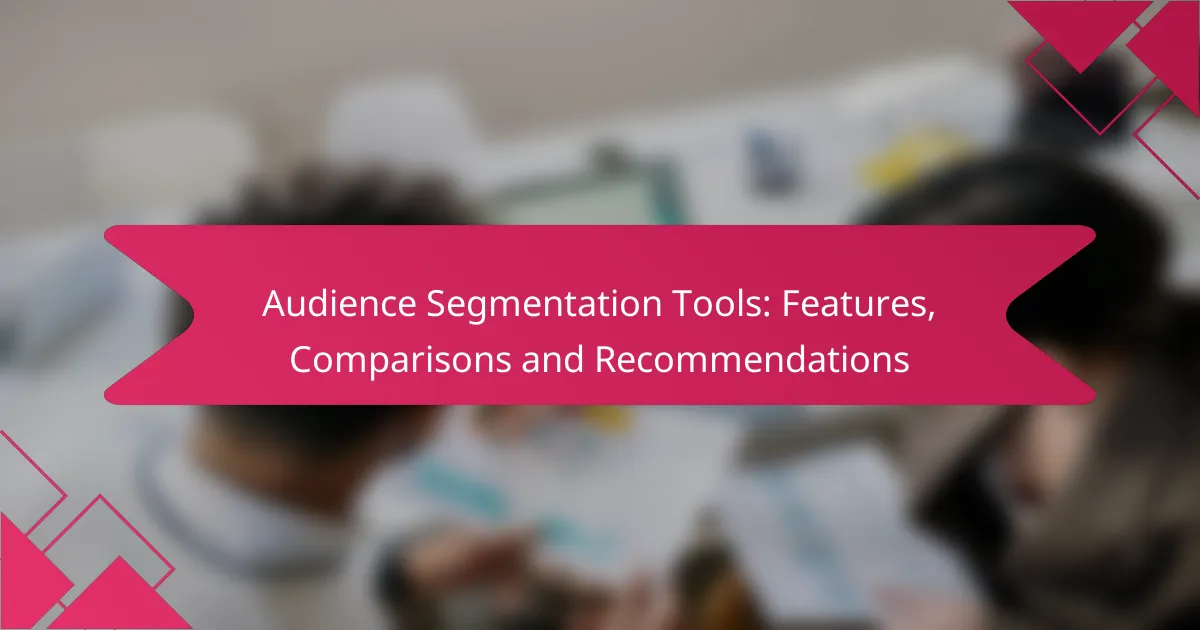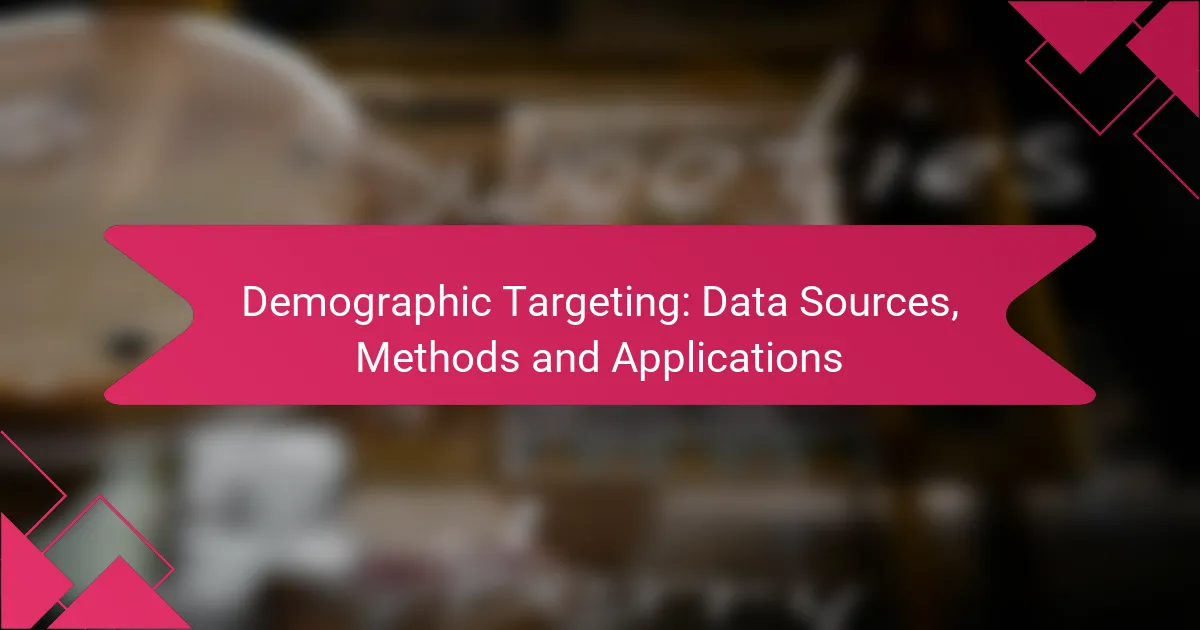Audience segmentation tools are essential for marketers looking to effectively categorize their audience and enhance campaign targeting. By utilizing platforms like HubSpot, Mailchimp, and Google Analytics, businesses can leverage unique features to gain deeper insights into their audience, leading to more personalized marketing strategies. When choosing the right tool, it’s important to consider factors such as data integration, user experience, and real-time analytics to optimize engagement and effectiveness.

What are the best audience segmentation tools available?
The best audience segmentation tools help marketers categorize their audience based on various criteria, enabling targeted campaigns. Key tools include HubSpot, Mailchimp, Segment, ActiveCampaign, and Google Analytics, each offering unique features to enhance audience understanding and engagement.
HubSpot
HubSpot is a comprehensive marketing platform that includes robust audience segmentation capabilities. It allows users to create segments based on demographics, behavior, and engagement levels, making it easier to tailor content and campaigns.
One of its standout features is the ability to automate marketing workflows based on segmented lists, which can significantly improve conversion rates. HubSpot’s user-friendly interface and integration with other tools make it a popular choice for businesses of all sizes.
Mailchimp
Mailchimp is well-known for its email marketing services, but it also offers effective audience segmentation tools. Users can segment their audience based on purchase history, engagement metrics, and even geographic location.
Mailchimp’s predictive segmentation feature helps identify potential high-value customers, allowing marketers to focus their efforts where they are most likely to yield results. Its straightforward analytics dashboard provides insights into the performance of segmented campaigns.
Segment
Segment specializes in customer data infrastructure, enabling businesses to collect, unify, and segment customer data from various sources. This tool is particularly valuable for companies looking to create a single customer view for more personalized marketing.
With Segment, users can easily integrate data from websites, mobile apps, and other platforms, allowing for more precise audience targeting. Its flexibility in data handling makes it suitable for businesses with complex data needs.
ActiveCampaign
ActiveCampaign combines email marketing with powerful automation and segmentation features. It allows users to create detailed segments based on user behavior, engagement, and demographic information.
ActiveCampaign’s automation workflows enable marketers to send targeted messages based on specific triggers, improving customer engagement. The platform is particularly effective for small to medium-sized businesses looking to enhance their marketing efforts without extensive resources.
Google Analytics
Google Analytics is primarily a web analytics tool, but it offers valuable audience segmentation features. Users can create segments based on user behavior, traffic sources, and demographics, providing insights into how different audience groups interact with their website.
While it may not have the advanced marketing automation features of other tools, Google Analytics is essential for understanding audience behavior and optimizing marketing strategies. Its integration with Google Ads allows for more targeted advertising based on audience insights.

How do audience segmentation tools improve marketing strategies?
Audience segmentation tools enhance marketing strategies by allowing businesses to categorize their audience based on specific characteristics. This targeted approach leads to more personalized marketing efforts, ultimately improving overall campaign effectiveness.
Enhanced targeting
Enhanced targeting is a primary benefit of audience segmentation tools. By analyzing demographics, behaviors, and preferences, marketers can create tailored messages that resonate with specific groups. For example, a clothing retailer might segment its audience by age and gender to promote different styles effectively.
When implementing enhanced targeting, consider using data analytics to identify key segments. Focus on high-value groups that are likely to respond positively to your campaigns, ensuring that your marketing budget is spent efficiently.
Increased engagement
Increased engagement is another significant advantage of using audience segmentation tools. Personalized content and offers lead to higher interaction rates, as consumers feel that the marketing speaks directly to their needs. For instance, an email campaign that addresses the unique interests of a segment can see engagement rates that are significantly higher than generic messages.
To boost engagement, regularly analyze audience feedback and behavior. Adjust your strategies based on what resonates with different segments, and consider A/B testing different approaches to refine your messaging further.
Higher conversion rates
Higher conversion rates often result from effective audience segmentation. By delivering relevant content to the right audience, businesses can significantly increase the likelihood of a purchase. For example, targeted ads that showcase products aligned with a user’s previous browsing behavior can lead to better sales outcomes.
To maximize conversion rates, track the performance of your segmented campaigns closely. Use metrics such as click-through rates and sales conversions to identify successful strategies and areas for improvement. Avoid common pitfalls, such as over-segmentation, which can complicate your marketing efforts and dilute your messaging.

What features should you look for in audience segmentation tools?
When selecting audience segmentation tools, prioritize features that enhance data analysis and user experience. Key aspects include data integration capabilities, user-friendly interfaces, real-time analytics, and customizable segments to effectively target specific audiences.
Data integration capabilities
Data integration is crucial for audience segmentation tools as it allows you to consolidate information from various sources. Look for tools that can seamlessly connect with CRM systems, social media platforms, and email marketing services. This ensures a comprehensive view of your audience, enabling more accurate segmentation.
Consider tools that support multiple data formats and APIs for easy integration. The ability to automate data syncing can also save time and reduce errors, making your segmentation efforts more efficient.
User-friendly interface
A user-friendly interface is essential for maximizing the effectiveness of audience segmentation tools. An intuitive design helps users navigate the tool easily, reducing the learning curve and allowing for quicker implementation of segmentation strategies.
Look for features such as drag-and-drop functionality, clear dashboards, and easy access to help resources. A well-designed interface can significantly enhance user engagement and productivity, making it easier to analyze and act on audience insights.
Real-time analytics
Real-time analytics provide immediate insights into audience behavior, which is vital for timely decision-making. Tools that offer real-time data allow you to adjust your marketing strategies on the fly, optimizing campaigns based on current audience interactions.
Ensure the tool can track key performance indicators (KPIs) in real-time, such as engagement rates and conversion metrics. This capability enables you to identify trends and make informed adjustments to your segmentation efforts quickly.
Customizable segments
Customizable segments are a fundamental feature of effective audience segmentation tools. The ability to create tailored segments based on specific criteria—such as demographics, behavior, or purchase history—allows for more targeted marketing efforts.
Look for tools that offer flexible segmentation options, enabling you to combine multiple attributes and refine segments as needed. This adaptability can enhance the relevance of your marketing messages and improve overall campaign performance.

How do audience segmentation tools compare in pricing?
Audience segmentation tools vary significantly in pricing, often depending on features, user capacity, and the level of support offered. Understanding these differences can help businesses choose the right tool that fits their budget and needs.
HubSpot pricing tiers
HubSpot offers several pricing tiers, including a free version with basic features and paid plans that range from around $50 to several hundred dollars per month. The paid tiers provide advanced functionalities such as automation, reporting, and integration capabilities.
When selecting a HubSpot plan, consider the size of your audience and the specific features you require. For small businesses, the Starter plan may suffice, while larger enterprises might need the Professional or Enterprise tiers for more comprehensive tools.
Mailchimp pricing options
Mailchimp’s pricing structure includes a free tier for basic email marketing and paid plans starting at approximately $13 per month. Paid options scale based on the number of subscribers and additional features like advanced analytics and customer support.
Evaluate your audience size and marketing goals when choosing a Mailchimp plan. The Essentials plan is suitable for growing businesses, while the Standard and Premium plans offer more advanced segmentation and automation features.
ActiveCampaign pricing structure
ActiveCampaign’s pricing starts at around $9 per month for the Lite plan, which includes essential email marketing features. As your needs grow, you can upgrade to plans that offer more advanced capabilities, with costs increasing based on the number of contacts.
Consider your marketing strategy and the importance of automation when selecting an ActiveCampaign plan. The Plus plan is ideal for businesses looking for advanced segmentation and CRM features, while the Professional plan adds even more sophisticated marketing automation tools.

What are the prerequisites for using audience segmentation tools?
To effectively use audience segmentation tools, you need a clear understanding of your target audience and access to relevant data. This includes demographic information, behavioral insights, and possibly psychographic data to create meaningful segments.
Data Quality and Availability
High-quality data is essential for accurate audience segmentation. Ensure that the data you collect is up-to-date, relevant, and comprehensive. This may involve using customer relationship management (CRM) systems, website analytics, and social media insights to gather necessary information.
Consider implementing data validation processes to maintain accuracy. Poor data quality can lead to misleading segmentation results, which may affect marketing strategies and overall effectiveness.
Clear Objectives
Establishing clear objectives is crucial before diving into audience segmentation. Define what you aim to achieve, whether it’s improving customer engagement, increasing sales, or enhancing brand loyalty. This focus will guide your segmentation strategy and help you choose the right tools.
For example, if your goal is to boost sales, you might segment audiences based on purchasing behavior or preferences. Aligning your objectives with segmentation efforts ensures that your approach is targeted and effective.
Understanding of Segmentation Techniques
Familiarity with various segmentation techniques is necessary for successful implementation. Common methods include demographic, geographic, psychographic, and behavioral segmentation. Each technique offers different insights and can be used alone or in combination.
For instance, demographic segmentation might involve categorizing audiences by age or income, while psychographic segmentation focuses on lifestyle and values. Understanding these techniques allows you to select the most appropriate approach for your specific needs.









